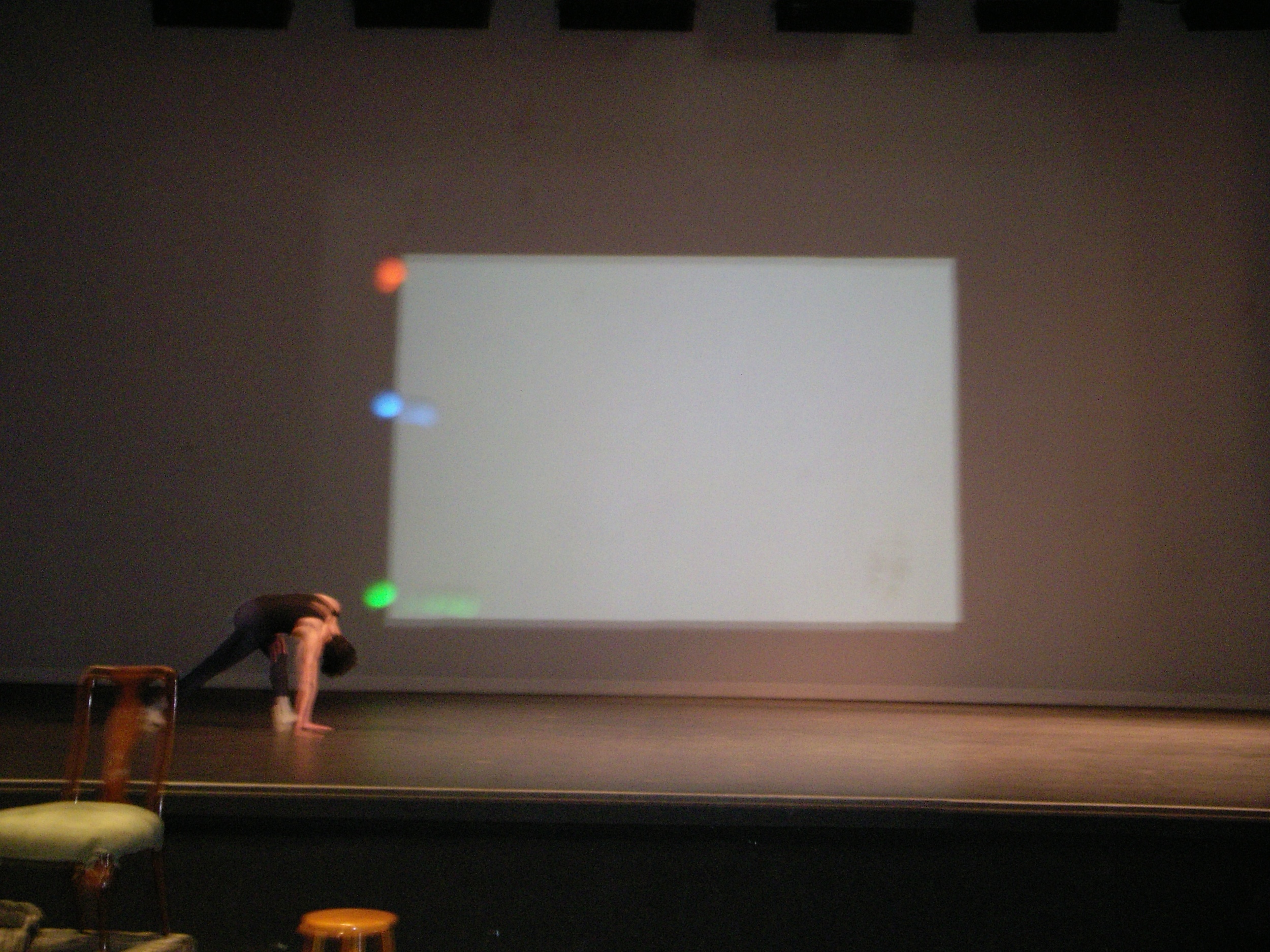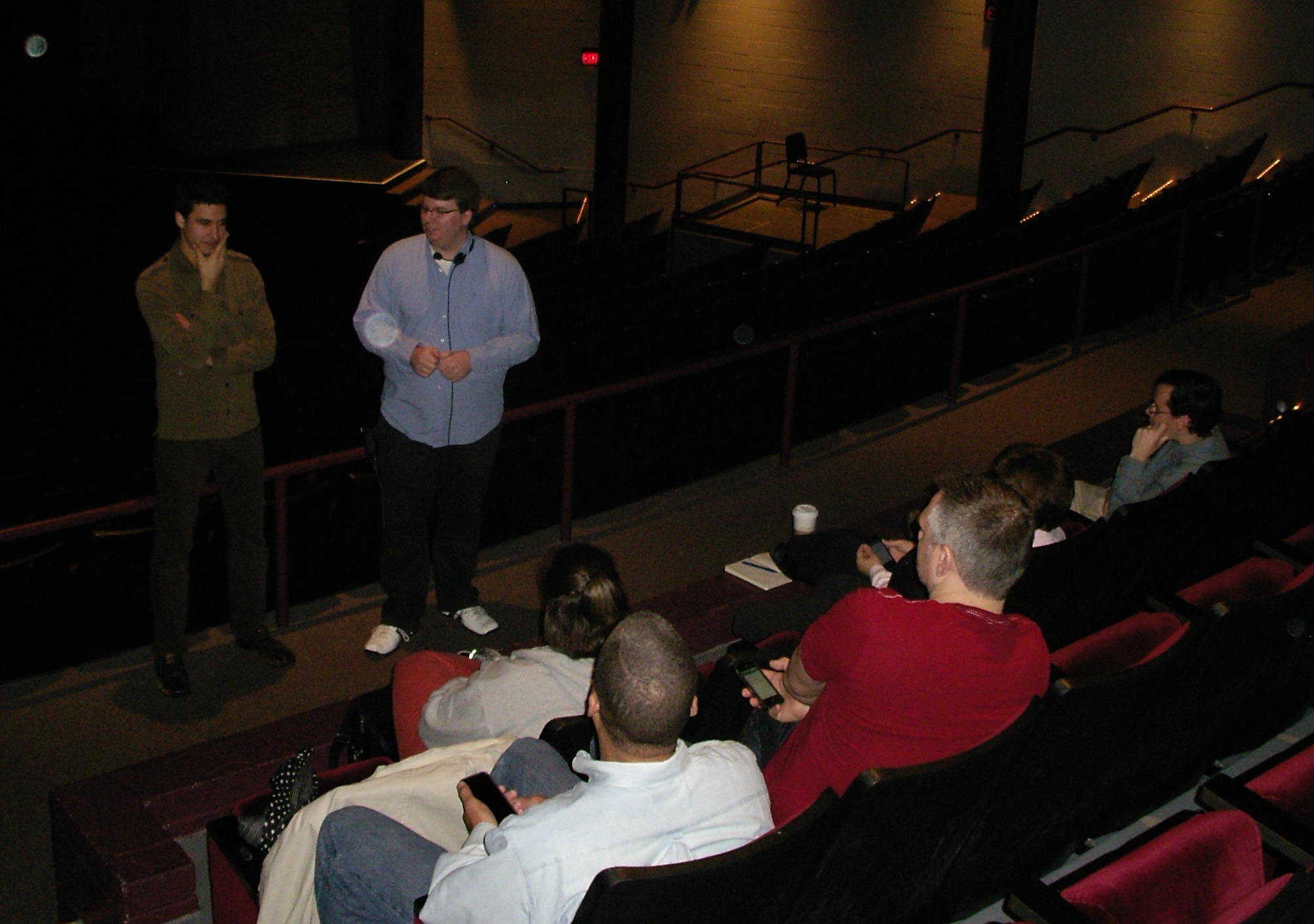Mobile Audience Participation with Jonah Bokaer and the Ferst Center
Audience interaction has become a pretty major trend this year and arts organizations around the country are experimenting with different ways to engage their audiences. But how does one go about making their experience a participatory one? Artist Jonah Bokaer and the Ferst Center for the Arts at Georgia Tech decided to approach the issue using mobile technology. Jonah Bokaer is an award-winning choreographer and media artist participating in the Ferst Center's first ever year-long dance residency program, ARTech. Jonah worked closely with students from the Georgia Tech Music Technology Program to develop MassMobile, a smartphone app that acts as an interactive platform for audience members to participate by affecting the stage in different ways. On April 2nd, MassMobile will premier with Jonah's new work FILTER at the Ferst Center.
I had to opportunity to speak with Jonah as well as Stephen Garrett, one of the graduate students on the MassMobile development team, and dancer Adam Weinert, who can be seen in the sneak peek video at the end of this post.
Where did the idea to include the audience in the performance, through a mobile app, come from?
Jonah - Well, in 2004 I made a work called RSVP, which planted 12 cellular devices in the audience. We used those devices and their ringtones to create the music for the piece. And that was engineered from offstage by the composer. But, when doing some initial research down here and planning this production called FILTER, I wanted to put forward the idea or the proposal that there could be interaction or intervention even, with the show. And maybe Stephen can take it from here, but we spoke with Jason Freeman and the Ferst Center and this relationship started.
Stephen – Yeah, and I think Jason’s idea, who is my advising professor on my master’s project, was to create a system that allowed for a rapid deployment of audience interaction devices through peoples’ mobile phones. So the idea came from Jason through some previous mobile development work and with several other projects, to create an iPhone and android application that will allow any type of input that the phones will allow. Whether that be an accelerometer, motion data, text messaging, touch data, drawing…anything that the phone will accept, to try and incorporate that into the performances in some way.
What are some of the direct ways that the audience is affecting the performance through MassMobile? Does it affect the lighting or are there sound elements that change?
Jonah - Well, one thing I just want to clarify is that this production will premier in it’s full form here in Atlanta on April 2nd. So we’ve had a six or seven day production period in Avignon France and we premiered the choreography, but MassMobile and these technological components have not yet been unveiled and actually this week we are holding a workshop with invited public to interact with it further.
So in terms of how the audience affects the performance? We’ve identified four ways for potential interaction. In particular I wrote in one section of the performance which is very much open-ended and is a 9 minute section which can basically be reconfigured a bit. Specifically the lighting is influenced. We worked closely with Aaron Copp, who is my lighting designer, to integrate that into the performance.
Stephen – And certainly MassMobile itself, the way that the app can interact with a piece, is not set in stone. It’s a creative conversation that is always happening. But specifically for this piece, for one of the sections that involves interaction during the pre-show, the audience is quite literally plugged into the lighting board through their app.
The actual technical details of the connection is that the mobile app is connected through a client server relationship to one of our servers here at Georgia Tech. Then there is a laptop that sits in the lighting booth that constantly pulls for information. Based on what items people have selected in the app, the laptop is connected directly to the lighting board and will instantly turn lights on and off. You can change color palettes and things like that pretty much instantly.
Did you build MassMobile specifically for this performance or is this a platform that could be used for other performances/performers?
Jonah – I would almost say that it is still in progress. But, you know, Aaron Copp and I have known each other since 1999 and have been building work together for a long time and often in our creative discussions we would say, “Is there some way to interface or interact?” As opposed to working with just video or with sound, lighting is so integral to these performances that MassMobile seems like a natural fit. I think that for light and choreography I am working in very particular ways. For larger applications of MassMobile I know there are many options.
Stephen – So MassMobile itself is the platform and the app, and is still in pretty active development. Working with Jonah and his FILTER has been a great way to beta-test the app and see it grow to more of its current capacity. My professor Jason Freeman already had the plan to use the application in a live music notation work with saxophone where the audience could directly affect the notes that the performer is seeing onscreen. So there are other uses for MassMobile in the arts imaginable.
Could you speak to the importance, for you, of having participation from the audience?
Jonah – Well, I should say that my degree is not in choreography, it is in media and visual arts. For my thesis I focused on the myth of interactivity and focused on a lot of mid to late video work in the 1980’s and 1990’s. My sense was that there is a certain parallel between what we could call this myth with interactivity with video, but also with performance. Just because it’s time based, it’s not necessarily interactive. This is one area of focus of mine in terms of creating performances.
I guess the impulse to say that an audience could interact, is still pretty much in progress. So far, at least in this stage in the piece, we’ve only had pre-show interaction. It’s kind of an open question.
I think some major conventions of theater are called into question, for example having the phones on during the show, the light of a cellular device on in the theatre. Some artists would consider this distracting, but in this case we are actually inviting it. There are certainly questions of attention and attention span. We’re sort of walking into this project and saying that it is assumed that this will be unusually structured.
So why create such an unconventional performance? Well really, the participation is a part of why we wanted to open this out. Because instead of really disrupting or undermining a performance, we wanted people to be able to engage and help the author.
Stephen – The way we’ve enabled that interaction is a very direct and literal effect the audience can have with the lighting of different parts of the stage. [The pre-show] is an opportunity for people to come in and the curtain is open and they can see the initial set and it gives them a chance to explore. Our hope is that creates a deeper and more meaningful bong throughout the rest of the performance. That [the audience] has really explored the set and can experience it on a different level.
In addition to the interaction between the viewer and the stage, do you think that this program will cause the audience to interact with each other?
Jonah – The way that we piloted MassMobile was to have six mobile devices distributed internally to members of the creative team, producers and close colleagues over the course of a few days. I did note, on a couple of occasions, the social interactions that would occur person to person. Maybe Stephen would like to address any interactivity within the platform itself.
Stephen – We did see people that were using the app that were sitting next to each other sort of communicating in person and coordinating their efforts, but at this moment that’s not something we’re doing. [Interactivity within the platform] is something we are looking at in the future of MassMobile. More specifically looking at how do we enable or make sure that people have their own voice in their interactions with the performance.
From a performer’s perspective, what is it like working with something like MassMobile?
Adam – From a performer’s perspective, I think what excites me most about this kind of initiative is that as a performer we’re always looking for new ways to engage the audience and make each articulation of the performance event unique and special and fresh. I think that MassMobile can be a unique way to do that.
The other thing I really appreciate is how we’re using this mobile technology and multimedia to make more personal the performance. Which I think is rare and hard to accomplish.
If you live in the Atlanta area I highly recommend heading over to the Ferst Center for the premiere of FILTER on April 2nd. You can find more information about performance times and tickets at the Ferst Center's main website here. Until then, he is a sneak peak of dancer Adam Weinert and MassMobile.
MassMobile App Sneak Peak from Ferst Center on Vimeo.

